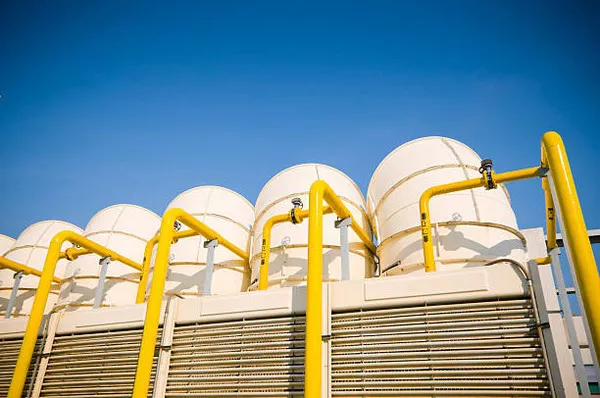Air compressors are vital tools across various industries, providing essential pressurized air for tasks ranging from powering pneumatic tools to inflating tires. Among the different types of air compressors available, the two-stage air compressor stands out for its efficiency and versatility. This article delves into what a two-stage air compressor is, how it operates, its advantages, and applications.
What is a Two-Stage Air Compressor?
A two-stage air compressor is a type of reciprocating air compressor designed to compress air in two distinct stages, or phases. Unlike a single-stage compressor, which compresses air in one stage, the two-stage compressor utilizes a more complex process that enhances efficiency and performance.
How Does a Two-Stage Air Compressor Work?
To understand the operation of a two-stage air compressor, it’s essential to first grasp the basic principles of air compression. The compression process involves drawing in air, compressing it to increase its pressure, and then delivering it at the desired pressure level.
First Stage Compression: In the first stage, air enters the compressor through an intake valve and is drawn into a large-diameter cylinder. A piston then compresses the air to a moderate pressure. The primary purpose of this stage is to bring the air to an intermediate pressure level. After compression, the air is transferred to an intercooler.
Intercooling: The intercooler plays a critical role in reducing the temperature of the compressed air between the two stages. Cooling the air before it enters the second stage helps to prevent overheating and increases the overall efficiency of the compression process. This cooling step is significant because it reduces the energy required for further compression and prolongs the life of the compressor components.
Second Stage Compression: In the second stage, the cooled air from the intercooler is further compressed in a smaller-diameter cylinder. This stage brings the air to its final, high-pressure level. The air is then discharged from the compressor, ready for use.
Advantages of Two-Stage Air Compressors
Two-stage air compressors offer several advantages over single-stage compressors, making them a popular choice for many industrial and commercial applications. Here are some key benefits:
Increased Efficiency: By compressing air in two stages and utilizing intercooling, two-stage compressors achieve higher overall efficiency. The reduction in air temperature between stages means that less energy is required for the second compression stage, leading to lower operational costs.
Higher Pressure Output: Two-stage compressors are capable of producing higher pressure levels compared to single-stage compressors. This makes them suitable for applications requiring high-pressure air, such as in certain manufacturing processes or heavy-duty pneumatic tools.
Extended Equipment Life: The improved cooling and reduced heat generation in a two-stage compressor contribute to less wear and tear on the equipment. This extended lifespan translates to lower maintenance costs and fewer disruptions in operations.
Better Performance in Extreme Conditions: Two-stage compressors perform well in environments where high temperatures and high humidity are prevalent. The intercooling process helps manage the effects of ambient conditions on compressor performance.
Reduced Noise Levels: The design and operation of two-stage compressors often result in quieter operation compared to single-stage models. This can be a significant advantage in noise-sensitive environments.
Applications of Two-Stage Air Compressors
Two-stage air compressors are versatile and find applications across various industries. Some common uses include:
Manufacturing and Production: In manufacturing environments, two-stage compressors are used to power pneumatic tools, operate machinery, and control automation systems. Their ability to provide high-pressure air makes them ideal for tasks such as spray painting and sandblasting.
Construction: The construction industry relies on two-stage compressors for powering tools such as jackhammers, impact wrenches, and pneumatic drills. The high-pressure capability of these compressors ensures that tools perform efficiently and reliably.
Automotive: Automotive repair shops use two-stage compressors for tasks like tire inflation, spray painting, and running air tools. The compressor’s ability to deliver consistent, high-pressure air is crucial for maintaining the performance and safety of vehicles.
HVAC Systems: Two-stage compressors are used in HVAC (Heating, Ventilation, and Air Conditioning) systems to provide the necessary air pressure for various components. Their efficiency and reliability contribute to the overall effectiveness of HVAC systems.
Agriculture: In agricultural settings, two-stage compressors are employed to operate machinery, such as sprayers and irrigation systems. The ability to handle high-pressure requirements makes these compressors suitable for demanding agricultural tasks.
Choosing a Two-Stage Air Compressor
When selecting a two-stage air compressor, several factors should be considered to ensure it meets your specific needs:
Pressure Requirements: Determine the maximum pressure required for your application. Two-stage compressors are available in various pressure ranges, so selecting one that matches your needs is essential.
Capacity and Flow Rate: Evaluate the air flow rate (measured in cubic feet per minute, or CFM) required for your application. Ensure that the compressor you choose can provide the necessary capacity to handle your workload.
Energy Efficiency: Look for models that offer high energy efficiency to minimize operational costs. Energy-efficient compressors can lead to significant savings over time.
Noise Levels: Consider the noise levels of the compressor, especially if it will be used in a noise-sensitive environment. Quieter models can improve working conditions and reduce noise pollution.
Maintenance and Service: Review the maintenance requirements and service options for the compressor. Choose a model with accessible parts and support to ensure ease of maintenance and repair.
See Also How an Air Compressor Dryer Works
Conclusion
A two-stage air compressor represents a significant advancement in air compression technology, offering enhanced efficiency, higher pressure output, and improved performance. By compressing air in two stages and utilizing intercooling, these compressors deliver superior results across a wide range of applications, from manufacturing and construction to automotive and agriculture.
Understanding the principles of operation, advantages, and applications of two-stage air compressors can help you make informed decisions when selecting equipment for your needs. Whether you are looking to power industrial machinery or perform precise tasks, a two-stage air compressor provides the reliability and efficiency required for demanding applications.

